Hiding from nuclear attacks under ones school desks has got to be one of the most salient memories of Americans who grew up in the 1950s and 1960s. I get told about it with some regularity when I tell people about my work — the recollections of the “Duck and Cover” drills are spoken of with a sense of grim humor, in a tone of “can you believe they made us do that?”
I’m not the world’s biggest critic of Civil Defense measures of this sort. Yes, Bert the Turtle is a bit condescending, but he was aimed at children, and for 1951 his message isn’t too far off. In 1951 the Soviets still lacked ICBMs and had bombs no more than double the yield of the Nagasaki weapon. Hiding under your desk probably wouldn’t help you much if the bomb went off right over your head, but could be significant for all of the people who were within a mile or so of the blast.
Civil Defense became a more problematic affair in the megaton and missile ages, especially since the Civil Defense planners were often kept out of the loop as to what the actual state-of-the-art was regarding bombs and tactics. There’s also a broader question about whether confidence (justified or not) in one’s ability to survive a nuclear attack drives states or individuals towards more dangerous behaviors with regards to nuclear weapons. But as a whole I think we’ve probably gone a little too far, culturally, in ridiculing Cold War Civil Defense measures — thanks in no small part by handling such as that in Atomic Café, which uses these films out of context.
I grew up in California in the late 1980s. I never did any “Duck and Cover” drills for nuclear threats — I wasn’t even aware of nuclear threats, to be honest. One of my first “political” memories is of the Berlin Wall coming down, when I was in the 6th grade. I remember being irritated, since I had just memorized which of the Germany’s was the “good” one and which was the “bad” one — no easy task for me at the time, given that the one with “Democratic” in its name was anything but!
We did have drills, though. The most common were the standard fire drills that everybody does — flee (“leave your bags!”) and line up a safe distance from the school. Boring. Next on the list were earthquake drills, a staple in California. These are basically “duck and cover” drills with less fear. You hide under your desk, or you stand in a doorway. The hardest part about earthquakes is recognizing when one is happening; unless you’ve been through a few of them (I had some practice when I lived in Berkeley) it can take practically the length of the whole earthquake for your brain to realize exactly what’s going on. What I think people who haven’t been in one don’t realize is how strangely noisy they are — they make doors shake in their hinges, and it is a very unusual sound, and your brain (at least, my brain) takes a little time to process this, which makes it hard to act rapidly. 1
But the most unusual drill we did where I grew up was something quite different, and I was reminded of it when I read about the massacre at the Sandy Hook Elementary School last week. I may digress a minute here.
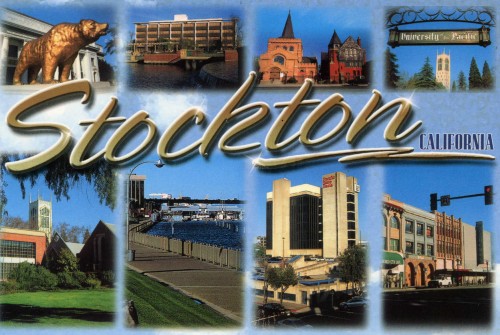
“Stockton, California: These are the most interesting things we could find to photograph. Two of them are the same thing from different angles.”
I grew up in Stockton, California. It’s right in the middle of the long Central Valley that runs through the middle of the state; it’s about an hour-and-a-half drive northeast of the Bay Area, or a 45-minute drive south of Sacramento. “I’ve driven through there,” people often tell me. Rarely anybody knows much about it though, if they aren’t from California, despite its being a perennial favorite for top slots in Forbes’ America’s Most Miserable Cities list (#1 in 2009 and 2011!) and occasionally making the front-page of The New York Times for its economic woes (housing bubble, city government going bankrupt, and so on).
The reason you probably don’t know much about it is because there isn’t a whole lot to say, and certainly very little to romanticize. It doesn’t have a “company town gone bust” story (e.g. Flint), or a “former grandeur gone to squalor” (e.g. Baltimore), and nobody makes national commercials using it as some kind of comeback story (e.g. Detroit). It’s a medium-sized American city that has many of the problems of other medium-sized American cities, just more so. It’s problematic mixture of bad economy, crime, and mundanity isn’t glamorous, and it doesn’t fit into any of the well-worn American archetypes.
But we did have a school shooting. On January 17, 1989, a disturbed loner, Patrick Purdy, brought a Chinese-made AK-47 to the Cleveland Elementary School and started firing. He killed five children and wounded 30 others, including one teacher. He then killed himself. The victims were mostly from Cambodia and Vietnam — Stockton is one of the major hubs for South Asian refugees.
I didn’t go to Cleveland Elementary; I was on the other side of town. I want to make explicit that I’m not trying to co-opt any tragedy, whether the one at Sandy Hook or at Cleveland, nor am I claiming any special knowledge of these things. But I remember the day pretty clearly. Not out of horror — I don’t think I was old enough to really process horror very well — but just out of awe. How does one live in a city, or in a world, where this sort of thing happens? What do you, as a kid, even think of in such a situation? (I didn’t know much about my own mortality at age 8, so that didn’t really factor into it.)
Stockton was in the national news — as always, just for something awful. Michael Jackson visited the city to show support for the children at Cleveland (very eighties). The state passed an assault weapons ban, part of a longer push for the Congressional assault weapons ban that was passed in 1994, and was allowed to lapse in 2004. The same ban that they are talking about revisiting today, as a result of Sandy Hook. As Michael Herr put it, “Those who remember the past are condemned to repeat it too, that’s a little history joke.”
But, to circle back, after the Cleveland massacre, all of the elementary schools in my town had “guy on campus with a gun” drills. Specifically, if the adult “yard duty” dropped to one knee and blew a whistle in three, long tones, we were all supposed to hit the deck. This wasn’t something we were just told, or that teachers had contingency plans for — we practiced it. I can remember this pretty vividly. It was our “Duck and Cover,” I suppose.
I’ve told this as stories to people before — prior to Sandy Hook — and their eyes widen, their mouth drops. Some have accused me of making it up! (I didn’t, and I’ve double-checked with others who I went to school with.) One friend of mine who grew up on the East Coast suggested that as children we must have been terrified. But I don’t remember being terrified. One isn’t terrified of fire when one is lining up outside, one isn’t terrified of earthquakes when one is standing in a doorway. The drills aren’t the thing. If anything, they’re either welcome interruptions to your daily routine, or they are boring activities involving standing in lines until everybody is accounted for. 2
Human beings, especially children, have a tremendous capacity for normalizing the horrific, if it is presented to them as “normal,” if they live it as “normal.” We’ve gone, over the space of six plus decades, from teaching our children that they will be atom bombed by the Soviet Union, to teaching them that they will be shot by unstable loners. What was a war from above became a war from below.
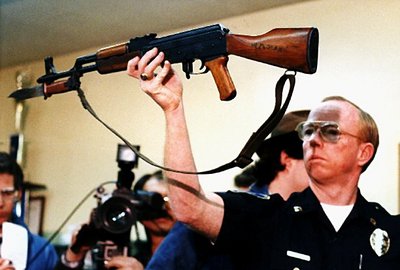
“1989 file photograph: Stockton Police Capt. J.T. Marnoch holds up a Chinese-made AK-47 assault rifle that gunman Patrick Purdy used to kill five schoolchildren and injure 30 others at Cleveland Elementary School in Stockton. (AP Photo/Rich Pedroncelli, File)”
In a way, wars from below are always the scarier threats, the ones that keep families and policymakers up at night, even though their ability to do mass damage is considerably diminished most of the time. “Conventional” threats, like other nation-states, can be understood through the sanitized lens of game theory, rational actors, and deterrence. Such a lens might not actually tell you much about real world behavior, but it makes the problem seem solvable. Threats that seem to come from everywhere at once, from the social fabric itself, are necessarily more diffuse, appear un-categorizable, and sometimes seem to have cures that are worse than the disease.
I don’t know what the exact response to the Newtown massacre should be, other than a long, long-overdue patching up of gun sales loopholes and maybe a reinstatement of that lapsed assault weapon ban. But I’m glad it’s not my job to try and hash out the details, or try and sell them politically. I do hope, though, it goes beyond telling children to hide under their desks, to expect that they might have to “hit the deck” to hide from their fellow countrymen. The “Duck and Cover” drills of the Cold War were evidence of a dangerous international regime — one where a “full nuclear exchange” was seen as a likely future outcome. School-shooter “Duck and Cover” drills of yesterday and today are evidence that something’s very profoundly wrong with how we’re doing things in this country.
- When we had that earthquake in DC in 2011, I was completely prepared, I have to admit. I recognized it for what it was very rapidly, and moved to a doorway. All of that California training was put to use. Part of my rapidity, then, was that I was too daft not to realize that earthquakes were so very rare in the mid-Atlantic states, and so didn’t rationalize it away. I did, however, do a back-of-the-envelope reasoning about what the effects of a thermonuclear blast set off in DC would feel like at my office in College Park, Maryland…[↩]
- And in any case, Stockton had enough horrors to go around. Among other things, the apparent inspiration for that urban legend about flashing your headlights at gang members was the shooting of a secretary at my own elementary school. Even that is more sensational and unusual than the more quotidian threats that one felt in a city with a pretty high crime rate, gang problems, drug problem, etc. The place was once Steinbeck country, it’s now something more like Breaking Bad country.[↩]
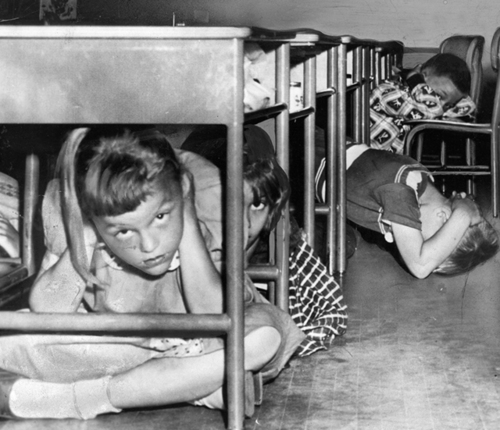
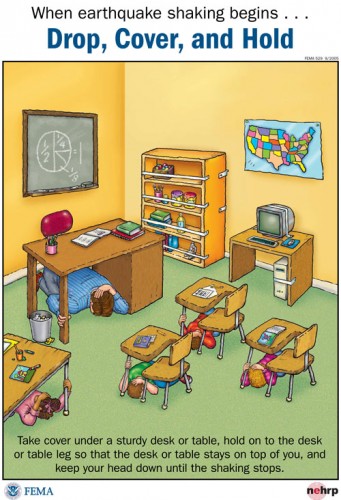
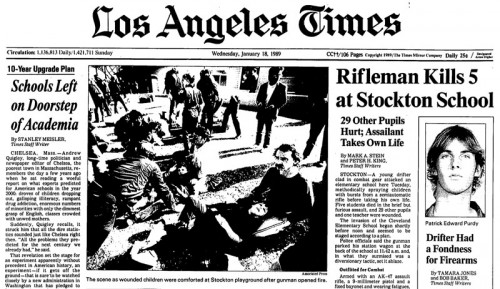
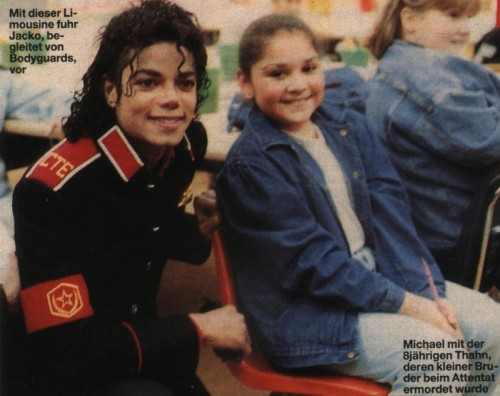


Great post, Alex. The 1950s “Duck and Cover” had been bothering me for a while, and, given how often it is ridiculed, I recently looked it up and was not surprised to see that it dated to the very early atomic era when being on the outside fringe of a blast radius was fairly likely in the event of a war in which nuclear weapons were used.
Actually, I’ve been thinking a lot lately about the narrative and historiographical function of reference points in history that “everyone knows,” and so was curious to get a first-, or even zeroth-order look at “duck and cover” not as a point in the history of civil defense, but as a point in the history of atomic ridicule. Naturally, then, to ngrams we go!, where we a minor bump of discussion in the 1950s, dwarfed by references to it beginning in the 1980s. This isn’t in the spirit of your post, I realize, but I was glad to get your take on the subject.
That sounds about right, in terms of the ngrams — that’s right around the time of “Cold War II,” the early Reagan years. As part of the anti-nuclear movement there was an explosion of activity referencing the early Cold War, a digging up of the old newsreels and a lot of retrospective work on the Manhattan Project as well. (Atomic Café, The Day After Trinity, and The Making of the Atomic Bomb all have their origins in the late-1970s and early-1980s, just to pick a few examples.)
One thing I was struck by while researching the dissertation and book was how the Federal Civil Defense Administration struggled to get good data from the Atomic Energy Commission on nuclear effects. It was a really delicate balance in terms of secrecy, because while the AEC did earnestly want to assist the FCDA, they didn’t want to tell them what they knew about Soviet capabilities, and they didn’t want to tell them what their own capabilities were, either. So the FCDA was in the dark a lot of the time and using really outdated definitions for what a “nominal bomb” was (20 kt) well into the megaton period. The FCDA folks were, I think, quite earnest about their work (whether it was a good idea, or whether it would even make a difference, is a separate question), but were hampered in a serious way by the fact that they knew really quite little about the state of the threat. Some of this will be in the book (it’s not in the dissertation).
I grew up in Los Angeles and remember very well the unannounced “drop drills” we had in the late 1960s and 1970s in elementary and junior high school to prepare in case of an earthquake (I don’t recall doing these in high school in the early 80s, perhaps because it was harder to fit under a desk by then).
It was only years later, after I had become fully immersed in the world of nuclear weapons and nuclear war, that I realized those drills had almost certainly evolved from the “duck and cover” drills of the 1950s.
I haven’t done much research on this specifically, but there seems to have been a really seamless transition from the Federal Civil Defense Administration to the Federal Emergency Management Agency, with all that that entails. There is probably an interesting paper, if not a book, in how those practices, ways of thinking, and ways of communicating transferred over from the nuclear threat to a more generalized vision of mass danger. It’s certainly striking to me, when looking at FEMA pamphlets from the very end of the Cold War, how the nuclear threat is presented alongside categories of “natural disasters” (earthquakes, tornados, hurricanes).
Nice post Alex. I have often been surprised by the number of Baby Boomers who recall doing Duck and Cover drills in the 1950s and have wondered how common they were. Or is this just a collective memory akin to all of the people who claim to have seen Sputnik, etc. In Other words, does the high frequency of memories of D&C correlate with the actual widespread practice of D&C drills?
That’s an interesting question. My guess is that they do, at least for certain time periods, as these seem to have been very, very common. What I don’t know is the frequency of such things — were they done regularly, or just a few times? Who decided to schedule them, the school administrators? That would be interesting to know.
I remember, for example, doing fire drills all the time in elementary school. Some sort of state requirement no doubt. I remember earthquake drills periodically, probably after the San Francisco earthquake (we felt it mildly in Stockton). I don’t have a clue how many of these “shooter drills” we had — I can remember at least one, vividly, but I’ve no idea if there was only one or we did it many times a year. My memories aren’t really arranged in terms of frequencies of things.
Though I’m about the same age as you, Alex (maybe I got a year or two on you) I was much more aware of the threat of nuclear war during the 80s. My father was a reporter. In the early 70’s (before my time) he’d been in Las Vegas, and had covered the odd underground test at the Test Site. He told a funny story about how they’d been bussing the press somewhere up there, and had passed a road sign that said “Groom Lake 12 ->” in silver duct tape. The press liason did the equivalent of a facepalm and the reporters surmised that someone had taken the order to “tape over the sign to Area 51” a bit too literally.
Later, while we were living in Omaha ca. ’84, he’d been part of a press tour at the NORAD facility in Offut AFB, and someone thought it’d be fun to pop an attack drill (without, of course, notifying the assembled reporters that it was a drill). My dad was pale for a week afterwards.
We were living in Little Rock in the later ’80s, and I’d gotten to go along on a tour of the Titan missile silos north of town soon after they were retired in ’87.
Anyway, as a result I was very aware of nuclear weapons and the threat they posed, and it kept me up at night sometimes. I still have the occasional nightmare. Heavy stuff for a kid to be thinking about…wish I hadn’t.
Felix: Thanks for your recollection. Our in California we felt fairly far away from nuclear things. At least, nobody talked about them. I recall being told at some point that “our city was a target” because we had some kind of transmitter there, but I’ve come to find that everyone feels that their cities were targets, no matter how small they were! But being in Omaha and Little Rock is definitely a different order of magnitude of feeling in the crosshairs, to be sure.
A fresh take on these issues after listening to the statement from the NRA earlier today. I don’t mean to shift the focus of this post from the history of the duck and cover campaign to something political, but this (partly) is exactly why a blog like this is meaningful and worth visiting if it should have some sway in how we form our opinions and build our knowledge in current political debates.
The business of making weapons is a powerful one. My scope of experience is limited (I was born the year the Berlin wall fell), but I imagine that for all of the protest there was against the building of nuclear weapons stockpiles in this country throughout the decades of the cold war, many felt that our lawmakers were not at all concerned with the safety of the civilian population. The reality of living under the threat of nuclear annihilation was accepted and normalized. I often wonder what this was like for another generation. I don’t want to live in a culture where gun-violence is accepted and normalized. We *don’t* live under the constant threat from some nefarious actor to justify this. Not anymore. The real danger we face is the influence money has in politics – when a powerful lobby like the NRA has more political sway than the civilians who are put at risk under its ideology.
Excellent point about the utility of duck-and-cover in the early 1950s. But I disagree that it could be compared in any way to a fire drill etc. We expected to survive a fire and go home. We did not expect to survive an atomic bomb. And in case we did, we thought we wouldn’t have a home to go to, or parents, or a city, or a future… pretty much the End of the World. More generally, you need to be careful about putting war from below on the same page with war from above. A car bombing every day wouldn’t add up to the London Blitz.
Hi Spencer: I agree 100% that the threat posed by nuclear war and the threat posed by more “mundane” threats, even nuclear terrorism, are not really comparable. But that’s part of why I’m so fascinated when the practices developed for the atomic context are moved into far less existential realms.
Alex has professed an interest in who John von Neumann was beyond his extreme genius.
So I found it illuminating how Alex’s disclaimer that “I want to make explicit that I’m not trying to co-opt any tragedy, whether the one at Sandy Hook or at Cleveland, nor am I claiming any special knowledge of these things” vaguely resembles von Neumann’s response to Robert Oppenheimer’s remark that the physicists involved in the Manhattan project had “known sin”:
“Sometimes someone confesses a sin in order to take credit for it” . . .
Another remark illustrating von Neumann’s humanity is: “If people do not believe that mathematics is simple, it is only because they do not realize how complicated life is.”
Were my comments redacted?
This isn’t a forum for general debate on gun control laws; there are plenty of other places on the Internet to go over the same old back-and-forth arguments. I moderate comments to keep them more or less on topic, and to weed out rants, per the comment policy. The post was not really about gun control, in any case.
As a baby boomer (tail end) I distinctly remember doing the duck and cover drills in Delaware in 1968. Much later, I discovered that a Russian attack on Washington DC alone was expected to start fire storms as far away as my hometown– Wilmington, Delaware
I went to school in the California system from the 60s, through the late 70s. We did duck and cover drills, many times. Even recall that they told us that if/when we saw the bright white flash in the sky, even in broad daylight, that was a nuke going off in the distrance and a city being vaporized. Even recall a few while we were out on the play ground. We knew and memorized (at least some of us took it seriously) the location of area fall out shelters etc etc.
After the 71 San Fernando quake they also had us doing Earthquake drills, but they weren’t duck and cover type in those days.
I don’t remember duck-and-cover drills in my early-Sixties grade schools. I do remember lots of discussion about civil defense in the adult press. I was deeply impressed by Paul Bussard’s article in Catholic Digest for March 1962, “The Shelter Church.” I was eight when it came out.
Father Bussard proposed a dual-use design for a building that could serve as a parish church, bingo hall, etc. during peacetime, but which could become a fallout shelter for many families if (God forbid) the need arose. This fascinated me. I pored over his diagrams. I believe this was the first time I learned that a concrete labyrinth could discourage neutrons, something I now get paid to think about.
I saw other accounts of fallout shelters in magazines of the time, but Father Bussard’s ingenuity in the face of World War III was most memorable. The table of contents touts “A plan to build perfect shelters at no extra cost,” which may have been a trifle naive. Google suggests that his article has not been noticed by scholars of the Cold War, so I’d like to bring it to the attention of Alex’s correspondents.
Excellent post. In hopes of giving that one anecdote that pushes us into data, we never had nuclear attack drills in Northeast Arkansas when I was in school there beginning in 1970. Whether this had to do with the relative remoteness of any possible targets (Memphis was over 60 miles away, Eaker AFB 45) or the fact that they just weren’t doing this anymore, I do not know. Perhaps they figured that since the tornado drills we did were the same thing, in the event of a national emergency they’d just call a tornado drill.
[…] Link. From an extraordinary blog I’ve just started reading. New insights. […]
Thank you for writing about the Cleveland Elementary shooting. I was one of the 30 students shot that day back in 1989 and I appreciate you shedding light on, what seems to be, a forgotten tragedy.
Thank you for this fascinating look at the past, my past specifically. As a student in the 60’s not only did we do Duck and Cover drills, but my father also built a bomb shelter in our back yard and we had family drills for that too! My father was a science teacher, so suspending his rationality for the panic and frenzy of creating the shelter scared me just as much as the impending doom of nuclear war. I thought that if he, as a man of science and knowledge, was this afraid…then maybe the threat was even more possible than our leaders were letting on.
For years I would flinch when a plane flew overhead, just waiting to see the bomb bay doors open and the end of the world to fall from the sky.
There’s a really great book called Riddley Walker by Russell Hoban that examines the idea of man’s responsibility to the destructive power of the atom…when a world destroyed by nuclear power and thrown back into the dark ages is about to rediscover the path to that power again. Should they take it, or is it better, and safer, to continue in ignorance?
I think that was what a lot of the civil defense information in the 50’s and 60’s was trying to achieve, give us the feeling that we were doing something positive in the face of a frightening invisible foe. For all the obviousness that a desk wouldn’t stop a nuclear blast, as has been pointed out there were posiible positive benefits.
I guess the question remains though…how much of that ‘safety’ was an illusion? Are there any statistics for how many near misses we had during the Cold War? Just how safe were we, and is it better not to know?
Great read Alex. I never really understood the whole ‘duck and cover’ meaning as I am a little too young for that I suppose. I have heard my mom singing the song back when I was growing up. I never looked at it from the broader stance of ‘civil defense’ though. Makes a lot of sense when compared to other forms of it. Thanks for the lesson!